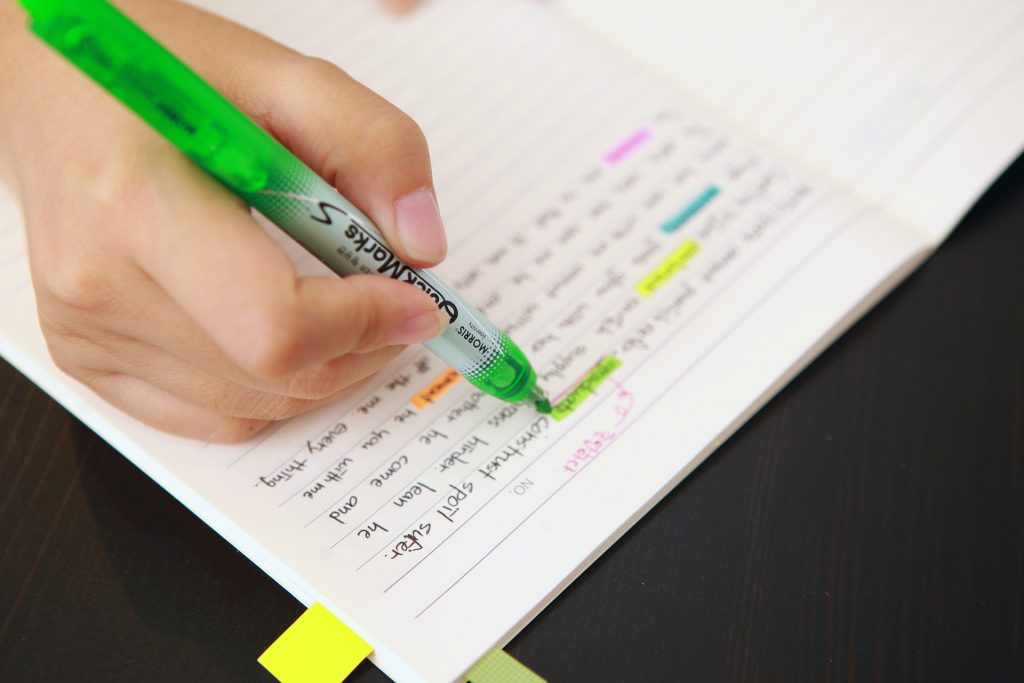You may or may not heard about memory techniques―using memory palaces to memorize a lot of information quickly. However, most of the articles deal with memorizing numbers, cards or lists of random objects. As accurate as this information is, it is often presented in a very unpractical way. In this article, I would like to describe how I use these techniques in my student’s life.
“You can memorize
a deck of cards,
so what?!”
I first heard about these techniques throw a book which let reader memories deck of cards before and after finishing the book. I improved from memorizing 10 cards in 5 minutes to memorizing the whole 52 cards deck. With shining eyes, like a kid who discovered superpowers, I presented this to my friend. I got the most unsatisfying response: “You can remember a deck of cards, so what?” We live in a world based on storing zeros and ones. Having a reliable way to memorize numbers or cards, the real question is: “How should we encode the information in order to work with these memory techniques?”
A quick reminder before I start. If you have just a few days before an important exam, save yourself some time and skip this article. Even though I believe that these techniques can really improve your score, it all comes with time and practice.
Memory Techniques
Memory techniques which I am describing here are mostly being used by people at memory competitions. In these competitions, people are competing in memorizing a deck of cards as fast as possible or as many numbers in one hour as possible. Everybody can have a different approach, but mostly everybody connects each number with a predefined image (e.g. person or object). Then they imagine these images in locations of a memory palace―some familiar place with predefined locations. After the memorization phase they go through the memory palace and each location reminds them of a different image which is connected with different card or number. Simple, right?
The small catch here is that you have to memorize which image belongs to which number/card in order to use this technique. Even more, how do you even memorize something different? To solve the first problem, for each number we set some image which reminds us of this number, for example, four could be a chair. Extending this approach whenever you need to memorize something new, you should imagine some object, person or action which reminds you of that information and store it into your memory palace. To learn more about this I would recommend checking the following links:
2.5 Read Approach
Rather than explaining all the details of these techniques, I would like to go over their usage in my studies. Obviously, the best method is to study regularly using spaced repetition method, but we all know how it goes. Even after that you still want to prepare your best for the finals. For that case, I use 2.5 read approach. In my opinion that is the bare minimum, you should do before an exam to feel prepared.
1. Read
The main goal of this step is to fully understand the materials. Depending on the subject this takes more or less time, but it is a crucial part of the whole process. Not only does it save time in next steps, but it is pointless to memorize something you don’t understand. In some subjects, this is the step where you should spend most of the time. After this step, there should be no questions left. Often, I like to write down some additional notes to make everything clear. Moreover, when I study math with all proofs and theorems, I like to jot down a few main keywords for each proof. These keywords remind me of the main concept, so I can quickly reconstruct the proof. They also speed up the memorization by pointing out the main ideas.
2. Read
The second read is where the memorization happens. By this point, you should be somehow familiar with the concept of memory palace.
A memory palace is basically any places which you can imagine in your mind. This place should have fixed locations which you can use for storing information. Personally, I use anything from home, a road to school, vacations or even maps from video games. In your memory palace, you choose some objects (chair, TV, bus stop) and that’s it. Now when you need to memorize something you just link the keyword with the object by creating a vivid image of them. Better description of how this works can be found on the pages linked at the beginning of this article.

Once you have your memory palace selected, you can start with the memorization. However, the memorization of “random” information isn’t easy. These techniques are usually described on learning numbers and lists of objects, but that’s rarely the case. Here come in handy the keywords from the first read. You have to determine how much keywords you have to know in order to remind yourself of what you learned. Personally, I never try to memorize everything. In fact, I try to memorize the least amount of information possible.
Each keyword then has to be linked with a place in a memory palace. I often try to squeeze multiple keywords in one location. Creation of these links can be slow at first, but with practice, it gets faster. Just don’t overthink it. First crazy thing which comes to your mind is often the best. Here is a little example:
Memorizing the proof of the inclusion–exclusion principle, a useful method of counting the number of elements in the union of finite sets. I write down the key step: 0 = (1 - 1)^n . This step sets me on the right track to the correct proof. Linked with the old tree on my way to school, I imagined:
…the tree turns into a big green rounded jelly monster (Zac) and jumps at me. As a ninja, I cut it top to bottom. It splits into two smaller bit stretched parts. But that’s not all. They turn red and starts to multiple as bacteria, covering every around them…
As you may notice there are multiple things happening. First, it’s good to have images representing a small number (e.g. Zac – Zero). Second, the cutting motion represents subtraction, leaving two stretch parts which look like ones. The image finishes with the multiplication.
0.5 Read
The repetition is the key for the long term memory. Preferably the next day, it’s necessary to walk through your memory palace and make sure everything is clear. If something is missing you have to go back and recall the image or make a stronger link. To keep the information for the long term it is a good idea to use some form of spaced repetition. By increasing the intervals between your recall sessions.
Conclusion
There is no defined method on how to use the memory techniques in studying and you shouldn’t be afraid to experiment. I recommend looking through the Art of Memory forum because there may be other people studying the same subject. Even though starting with the memory techniques can be a slow process, I think it’s worth the time. What are your thoughts on memory techniques and experience with studying using them, let me know in the comments?

Leave a Reply